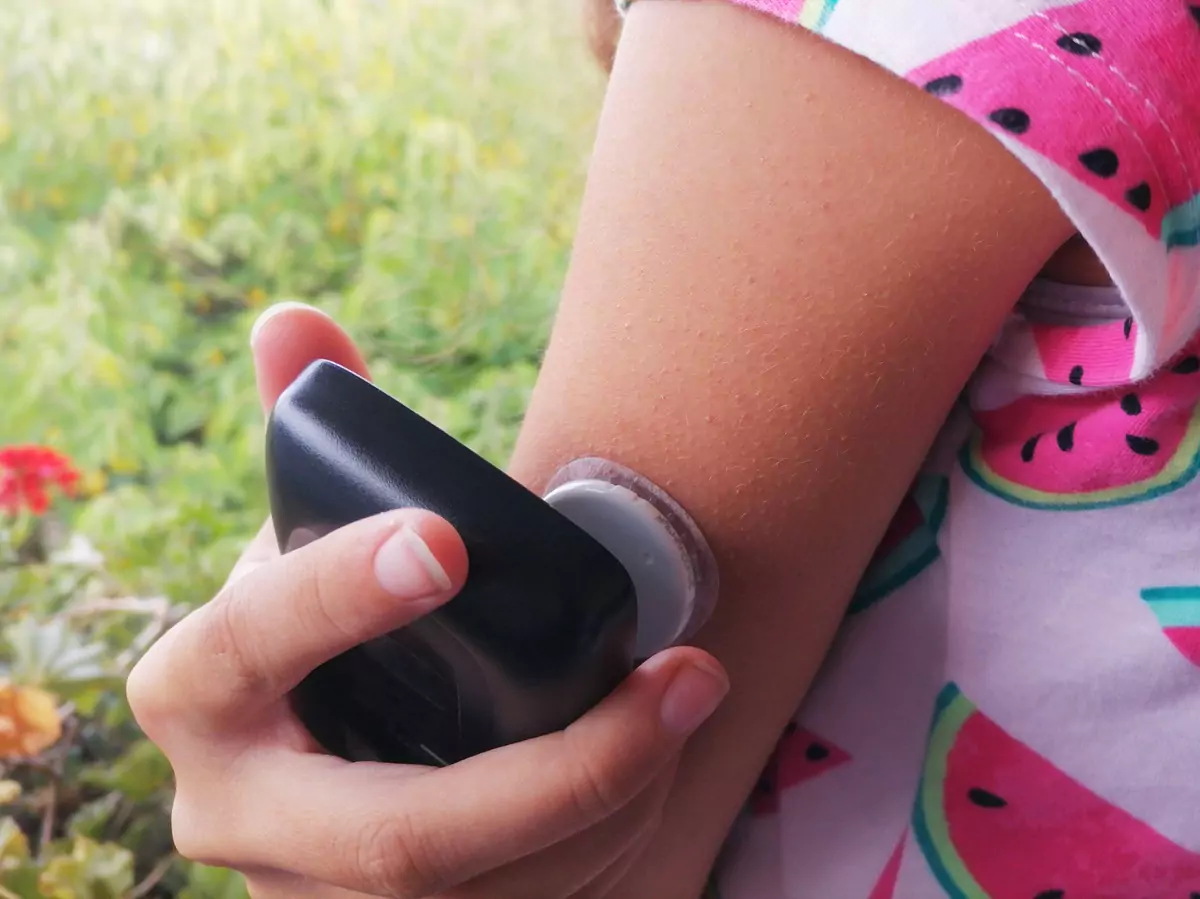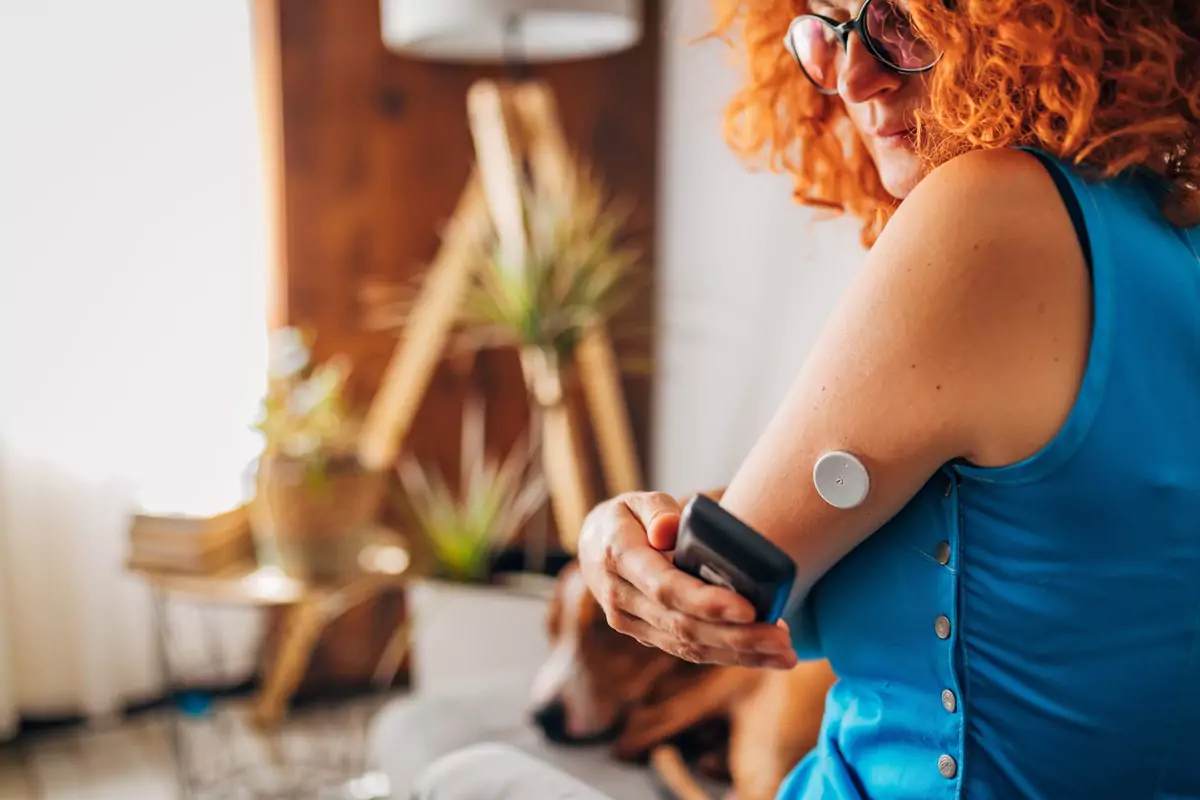





What Are the Disadvantages of Dexcom?


Table of Contents
- The Popularity of Dexcom
- The Disadvantages of Dexcom
- Accuracy Concerns
- Sensor Related Issues
- Connectivity Quirks
- Alarm Fatigue: More than Just Noise?
- Affordability: Weighing the Costs
- Dexcom CGM: The Maintenance Marathon
- The Dexcom Puzzle: Replacement
- Considering Alternatives: CGMs and BGMs
- Weighing Up the Alternatives
- The Dexcom Verdict
- About The Author
While the groundbreaking Dexcom device delivers a wealth of benefits, it's not without its drawbacks. Understanding these challenges is critical, as it shapes the decision-making process when considering the right Continuous Glucose Monitoring (CGM) system for diabetes management.
We'll now delve into the primary concerns surrounding Dexcom: accuracy, sensor complications, connectivity hiccups, alarm fatigue, cost, maintenance, and replacement issues.
The Popularity of Dexcom
The Dexcom device enjoys popularity among the diabetes community. An invention of an American medical firm, Dexcom, it facilitates the monitoring and management of diabetes with a host of features. However, the voices of those who've experienced the downsides of the device are equally important to consider.
The Disadvantages of Dexcom
Accuracy Concerns
When discussing Dexcom, accuracy inevitably surfaces as a significant concern. Users have highlighted instances of inconsistent readings, with the device sometimes showing elevated blood sugar levels that don't match the user's actual condition. Causes of these inconsistencies could include interference from cellphones, microwaves, or other electronics.
There are also issues of delay in readings, which inevitably impacts the device's accuracy. The implications of inaccurate readings are far-reaching and potentially harmful. Users depend on these readings to determine insulin dosages; therefore, inaccuracies could result in insulin underdosing or overdosing. This makes it crucial for users to be mindful of Dexcom's potential fallibility.
Some people even cross-verify their readings with blood glucose meters as an added precaution. There are also physical factors influencing the device's accuracy.
These include the sensor's position on the user's body and their body temperature. Notably, some users have reported that Dexcom readings may deviate by a significant 20-25%. This stark contrast between actual and Dexcom readings could spell disaster for a diabetic user.
Sensor Related Issues
But accuracy is just the tip of the iceberg; let's now talk about sensor-related issues. The CGM device uses a sensor inserted into the skin — an uncomfortable, even painful, process for some. Irritation, allergic reactions, and potential dislodgement of the sensor further compound this discomfort.
The sensor's adhesive, essential for maintaining continuous contact with the skin, is another cause for concern. Over time, the adhesive's efficacy may deteriorate, leading to detachment. This issue, coupled with potential skin irritation and redness due to prolonged exposure, is an additional challenge for users.
Moreover, properly inserting the sensor could prove to be a tricky task, potentially leading to improper positioning and inaccurate readings.
Add to this the need for frequent sensor replacement — a daunting task for those juggling busy schedules. While the Dexcom CGM does offer alerts when sensor replacement is due, it may not always align with the user's convenience.
Connectivity Quirks
The Dexcom system, at times, leaves users wrestling with issues of connectivity. Latching the device onto smartphones or additional devices might require more patience than is desirable, risking missed or even flawed readings. There's been a fair share of user reports about hardships faced when attempting to marry their Dexcom system to their gadgets.
Certain limitations surrounding the Dexcom application complicate the picture further. It maintains exclusivity with a specific set of devices, the likes of iPhones and iPads, and might prove a bit tricky on other platforms. It throws a spanner in the works for those who aren't armed with compatible devices or possess gadgets that don't gel well with the Dexcom app.
As far as the speed of connectivity goes, Dexcom lags its competitors in the CGM device market. Snail-paced connections can give birth to lags in data transfer and hold up glucose readings, severely compromising the accuracy of such readings.
A noticeable obstacle within the Dexcom application is its resistance to syncing with other devices. It might take a few goes before the Dexcom marries with a device, proving cumbersome and time-eating.
Plus, it lacks the ability to hobnob with third-party apps, like health tracking ones, causing significant impediments for health data enthusiasts. As a whole, Dexcom's connectivity remains a sticking point.
It might become a headache to hook the device up with other gadgets, including smartphones, and face the lethargic pace of connection. Coupled with the app's susceptibility to technical hitches and incompatibility issues, the user experience can be derailed.
Alarm Fatigue: More than Just Noise?
Dexcom carries the downside of alarm fatigue. It's a feeling of bombardment when the user is constantly hit by alarms - true or false - from a CGM, which can lead to users shrugging them off. Dexcom doesn't furnish users with the freedom to tweak alarm settings to their liking. False alarms, unfortunately, aren't strangers to Dexcom, amplifying the noise of alarm fatigue.
They could spring from a variety of sources - flawed readings, sensor breakages, or miscalibration, among other things. And, they aren't the easiest to debug, given the myriad of possible culprits. True alarms aren't spared either. Dexcom offers a tight window of alarms, pre-set to unmodifiable levels. This could be a hiccup for users with unique needs that the alarms fail to meet.
Plus, any alterations to the alarm settings have to be routed through the Dexcom app or website, both of which might not be the most user-friendly. Alarm fatigue might pose a particularly daunting challenge for diabetic patients. They count on precise readings and well-timed alarms to manage their condition.
Alarm fatigue, coupled with a lack of customization and user-friendliness, can sow seeds of confusion and irritation. It could also mean missing crucial alarms, pushing users into dangerous territory. Thus, Dexcom users should bear in mind the potential for alarm fatigue. It's essential to consider personal needs and lifestyle while choosing a CGM and ensuring it's utilized to its maximum potential.
Affordability: Weighing the Costs
The high price tag associated with Dexcom is a significant stumbling block. Given the cutting-edge tech it employs and its potency, Dexcom tends to lean on the pricier side. This is particularly true when it comes to buying necessary supplies, such as sensors, connectors, and transmitters. Dexcom could end up costing up to $100 per month, depending on where you hang your hat.
This figure factors in supplies like adhesive patches, replacement sensors, transmitters, and receivers. Frequent use of Dexcom might see the expenses piling up. Insurance coverage might help soften the blow, but it's subject to your individual plan.
The financial pinch of Dexcom might be even sharper for users requiring a ton of supplies. Especially, if these supplies are sourced from a retail outlet or online, the accumulated cost of sensors, transmitters, and connectors can prove heavy on the pocket. For those who find themselves replacing their device often, the Dexcom cost can skyrocket.
Replacements for adhesive patches, sensors, and transmitters can lead to a hefty bill. Besides, locating these parts could be a challenge and may need a direct order from the manufacturer.
The steep price of Dexcom might be a deal-breaker for some, especially for those not backed by insurance or those saddled with high deductibles. The pricey supplies needed to use Dexcom further complicate matters.
While insurance might cover Dexcom in some cases, this would depend on the specificities of an individual’s plan. On balance, the high costs of Dexcom could be a significant deterrent. The frequency of use, the cost of supplies, and the availability of replacement parts can push the overall cost upwards. Those without insurance or saddled with high deductibles might find Dexcom out of their financial reach.
Dexcom CGM: The Maintenance Marathon
Oh, the trials and tribulations of preserving a Dexcom Continuous Glucose Monitoring (CGM) system! A perplexing labyrinth, it presents its challenges in diverse ways. For starters, calibration. A task as herculean as any, it demands twice-daily precision for the sensor. The untrained user, or those sans a reliable blood glucose meter, might find this a Sisyphean task.
Next, we hit the constant maintenance hurdle. The user must play caretaker, keeping their device updated with the newest software, and the app in its freshest form. Not just that, every gear in this well-oiled machine - the transmitter and the receiver - needs to work like a charm. Moving on, the cunning chameleon that is the battery life! One must regularly run a check on the transmitter battery, ensuring it's neither down and out, nor inaccurate. Then we face the specter of the Dexcom G4 Platinum or G6 Plus systems.
These nifty pieces of tech can fall prey to interference from other wireless devices, causing a mayhem of inaccurate readings and disruption. Lastly, it’s the environment, the unseen adversary. Changes in humidity, temperature, altitude? They can all play havoc with the CGM, sending your readings haywire.
In the grand scheme of things, it's a cumbersome task, maintaining a Dexcom CGM system, but it’s paramount for accurate readings. Understanding potential issues, tackling problems as they arise, keeping the system updated and functional; it’s all a part of the Dexcom experience.
The Dexcom Puzzle: Replacement
Swapping out Dexcom parts? That's no walk in the park. Sure, there's a smattering of replacement parts available, but tracking them down is akin to a treasure hunt. Dexcom does provide some clues on their website, but retail stores often prove a fruitless endeavor. Plus, Dexcom's parts variety isn’t exactly the spice of life. Now, understand this: you're essentially performing surgery here.
Replacing parts isn't child's play. It demands a thorough understanding of the device, its anatomy, and how to avoid damage during installation. The plot thickens with the compatibility conundrum. Cross-checking parts compatibility becomes crucial; else, you run the risk of a faulty functioning device.
Remember, certain parts need their adhesive or lubricant buddies to ensure a smooth installation. Then there's the money monster. Replacement parts aren't cheap, and they often require the expertise of a professional for installation. Specialized tools? A solid grasp on the device’s inner workings? Both prerequisites to properly replacing parts.
To top it all off, certain Dexcom devices might have discontinued parts or none at all, making replacements for older devices a Herculean task. However, despite the potential difficulties and limited availability, it's crucial to ensure compatibility, understand the device, and prepare for the costs associated with replacement parts.
Considering Alternatives: CGMs and BGMs
In the realm of glucose monitoring, Dexcom faces some competition. Enter: Continuous Glucose Monitors (CGMs) and Blood Glucose Monitors (BGMs). CGMs, the all-seeing eyes, offer real-time continuous glucose level readings. They're your personal assistant, alerting you of any sudden changes in glucose levels, thus enabling timely intervention.
But, they do have Achilles' heel: accuracy issues due to user error or other medical devices interference. Meanwhile, BGMs are the snapshot artists, painting a single glucose level picture using a drop of blood. Easier and less invasive than CGMs, but they demand more frequent calibration and the results can waver based on user technique.
The multiple readings throughout the day are a bit of a bummer, compared to the constant vigilance of a CGM. Both CGMs and BGMs, they’re different sides of the same coin. CGMs, with their continuous readings, have the edge on accuracy and convenience but require more TLC and weigh heavier on your pocket.
On the other hand, BGMs are the frugal choice, easy to use but necessitate frequent readings and are prone to accuracy issues due to user error or other device interference. Remember, it’s not always a this-or-that situation. A CGM-BGM combo might just be the ideal glucose monitoring solution for some. Whether you choose Dexcom, an alternative, or both, it ultimately comes down to individual needs and preferences.
Weighing Up the Alternatives
Should you go with Dexcom, or should you explore other options? To answer this, you must first weigh the pros and cons of the alternatives, primarily Continuous Glucose Monitors (CGM) and Blood Glucose Monitors (BGMs). CGMs, these are the all-seeing eyes of glucose monitoring.
Sporting these on your body, be it on an arm or abdomen, is like having a personal diabetes assistant. Real-time tracking, alerts for those nasty highs or lows, and trend tracking – they've got you covered. The key attractions of CGMs? Accuracy, convenience, and trend data. The downside? They might leave a dent in your pocket and require sensor replacement and calibration.
Next up, we have the BGMs. These are your glucose level inspectors. Handy for spot checks or long-term monitoring, they're a pocket-friendly alternative to CGMs. Easy to use and maintain, these gadgets do have their drawbacks.
The finger-prick for blood samples isn't everyone's cup of tea. Plus, compared to CGMs, they're less accurate and can only offer a one-time reading. Even with these advanced devices, maintaining healthy blood sugar levels can be a challenge.
Sugary temptations lurk everywhere from meals to snacks, and sometimes, all the effort still falls short. It's in these challenging moments that SugarMD Advanced Glucose Support can be a game-changer. Its blend of traditional Ayurvedic herbs aids in regulating blood sugar levels, taming cravings, supporting weight loss, and boosting metabolism and energy levels.
Ideal for both pre-diabetics and Type 2 diabetics, and backed by endocrinologists, this potent formula fosters overall blood sugar health. In the face-off between Dexcom and other alternatives, keep in mind the trade-offs. CGMs promise more accuracy and ease, but their cost and maintenance might make you think twice.
On the other hand, BGMs may not be as accurate and do require some manual work, but they're budget-friendly and simple to use. Each choice has its own perks and drawbacks. It's crucial to understand these before you commit.
The Dexcom Verdict
Dexcom, a CGM system that has captured hearts in the diabetic community, carries its fair share of pros. But, like any tech on the market, it's not flawless. Its popularity notwithstanding, Dexcom does stumble sometimes. The pitfalls? Inaccurate readings and false alarms. Issues with the sensor could leave you dealing with skin irritation and painful insertions.
Connectivity woes may make pairing with other devices a Herculean task. Then, there's the burning hole in your pocket. Dexcom can be pricey, and replacement parts aren't always on standby. Moreover, maintaining the system isn't a breeze, with potential tech glitches or malfunctions. Sure, there are alternatives like other CGM systems or BGMs.
Each has its own set of benefits and trade-offs, and it's important to weigh these against your unique needs. In a nutshell, Dexcom can be a powerful ally in your diabetes management arsenal. However, it's not without its drawbacks. So, while Dexcom brings a lot to the table, remember to do your homework. An informed decision can only be made once you're well-versed with the pros and cons of the system, and have considered if it aligns with your needs.
About The Author
Meet Dr. Ahmet Ergin a highly skilled and dedicated endocrinologist with a passion for diabetes care. Dr. Ergin earned his medical degree with honors from Marmara University in Istanbul. He completed internal medicine residency and endocrinology fellowship at Cleveland Clinic.
Dr. Ergin is board-certified in Internal Medicine, Endocrinology, Diabetes, and Metabolism due to his vast medical expertise. He's a certified diabetes educator, author of "The Ultimate Diabetes Book," and founder of "the SugarMD YouTube channel."
Dr. Ergin offers exceptional diabetes care to his patients in Port Saint Lucie, FL, helping them manage effectively. Disclaimer: These statements have not been evaluated by the Food and Drug Administration. Information on this website isn’t intended to treat, cure or prevent any disease. Discuss with your doctor and do not self-treat.
Written By Dr. Ahmet Ergin
461 total articles
Meet Dr. Ahmet Ergin, a highly skilled and dedicated endocrinologist with a passion for diabetes care. Dr. Ergin earned his medical degree with honors from Marmara University in Istanbul. He completed internal medicine residency and endocrinology fellowship at Cleveland Clinic. Dr. Ergin is board-certified in Internal Medicine, Endocrinology, Diabetes, and Metabolism due to his vast medical expertise. He's a certified diabetes educator, author of “The Ultimate Diabetes Book,” and founder of “the SugarMD YouTube channel.” Dr. Ergin offers exceptional diabetes care to his patients in Port Saint Lucie, FL, helping them manage effectively. For a closer look into his insights and experiences, connect with Dr. Ahmet Ergin on LinkedIn, Instagram, and YouTube.”
Disclaimer: These statements have not been evaluated by the Food and Drug Administration. Information on this website isn't intended to treat, cure or prevent any disease. Discuss with your doctor and do not self-treat.
Products















